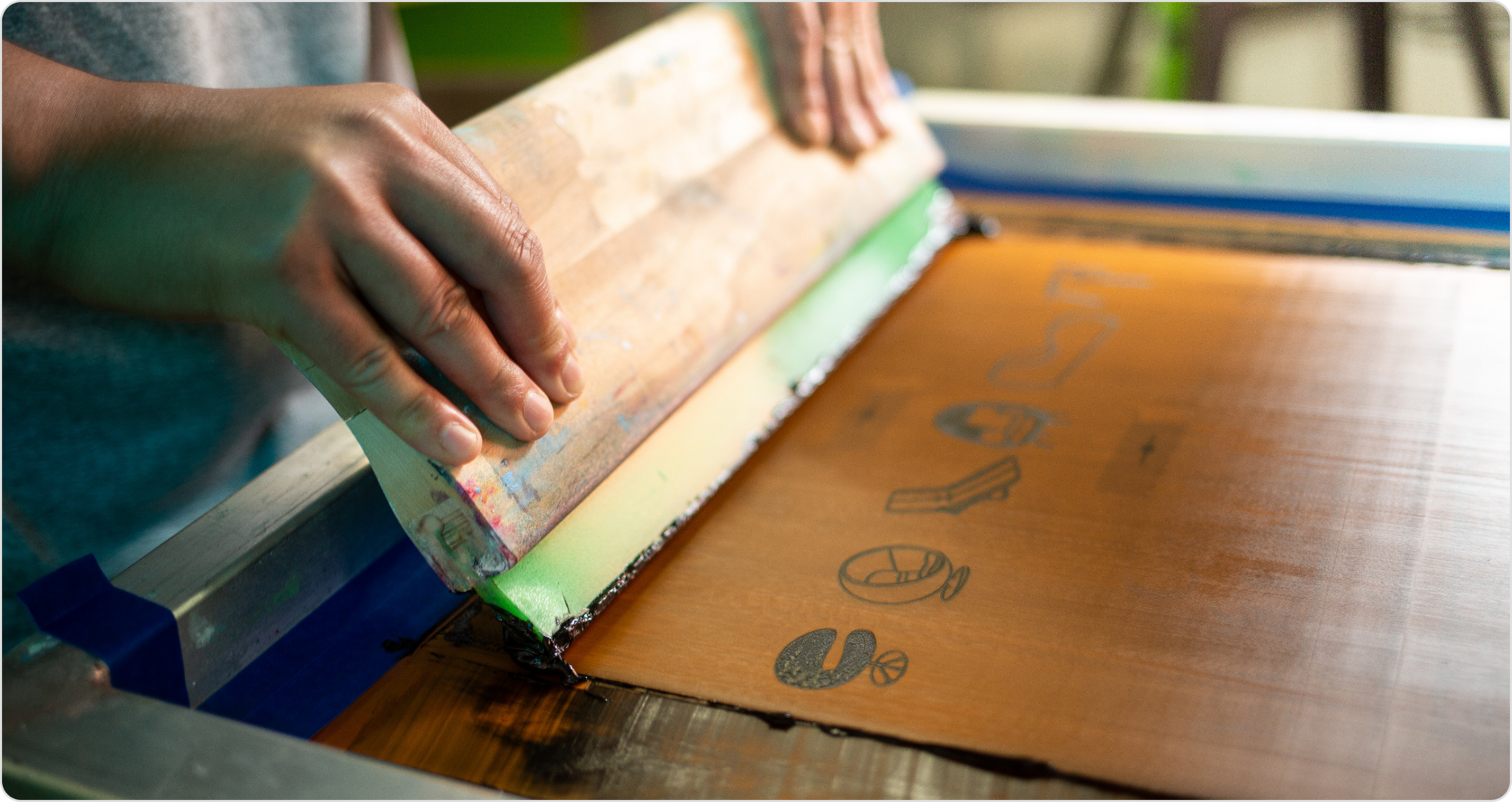High-density screen printing

High-density screen printing builds on the many qualities of traditional screen printing.
However, there are some crucial differences between these related printing processes. By using thicker inks and multiple layers, high-density screen printing creates thicker designs with a pronounced, tactile finish.
Read on to learn about what defines this customization technique, its pros, cons, and design best practices.
What is high-density screen printing?
High-density screen printing is a screen printing technique that produces designs with a thick, raised surface.
Unlike traditional screen printing, which creates a flat, thin layer of ink on the substrate, high-density screen printing usually (but not always) uses specialized, thicker inks and techniques to create a three-dimensional effect. Multiple layers of ink can also be used to build up the design.
The end product is bolder and more tactile than traditional screen printing. It sits somewhere between regular screen printing and puff printing, another form of screen printing that produces an even more 3D surface.
How is high-density screen printing different from regular screen printing?
The difference between high-density screen printing and regular screen printing lies in the ink and application process.
High-density screen printing sometimes uses thicker, more viscous inks applied in multiple layers to create a raised effect. You can also use multiple passes of the same ink to create the same effect.
On the other hand, regular screen printing uses thinner inks and a single layer of ink to create a flat, smooth design.
How does the high-density screen printing process work?
High-density screen printing begins with the creation of a stencil, or screen, that features your design.
The screen is placed on top of the substrate, and the specialized high-density ink is applied using a squeegee. The ink is then cured using heat, which causes it to expand and create a raised texture.
The process is repeated multiple times, with each layer of ink adding to the height and dimension of the design. Both the number of layers and the curing time can be adjusted to control the final appearance and texture of the print.
Pros and cons of high-density screen printing
High-density screen printing offers several key advantages:
- Eye-catching appearance: The raised, tactile finish of high-density prints makes them stand out from traditional screen prints and other decoration methods.
- Durability: When properly cured, high-density screen prints are highly durable and resistant to cracking, peeling, and fading.
- Versatility: High-density screen printing can be used on a variety of substrates, including t-shirts, hats, bags, and promotional items.
However, there are a few limitations to consider:
- Limited detail: Due to the thickness of the ink, high-density screen printing is best suited for simple designs with bold lines and shapes. Fine details and intricate patterns may not translate well.
- Fewer color options: High-density screen printing typically uses fewer colors than regular screen printing, as each color requires a separate screen and application process.
- Increased production time: The multiple layers and curing time required for high-density screen printing can result in longer production times compared to regular screen printing.
What kind of designs work best for high-density screen printing?
High-density screen printing is best suited for designs that feature:
- Bold, simple shapes and lines
- Large, easily readable text
- Single or two-color artwork
- Logos and branding elements
When creating a design for high-density screen printing, avoid intricate details, small text, and complex color gradients, as these may not translate well to the raised, tactile finish.
What products are most suitable for high-density screen printing?
High-density screen printing can be used on a wide range of products, including:
- T-shirts and other apparel
- Hats and caps
- Bags and totes
- Mousepads and coasters
- Promotional items and giveaways
When selecting a product for high-density screen printing, consider the material's texture and flexibility. Smooth, flat surfaces work best, as the raised ink can be applied evenly and consistently.
Make a lasting impression with high-density screen printing
High-density screen printing is a powerful tool for creating bold, tactile designs that leave a lasting impression.
Its eye-catching appearance and durable finish offer a unique way to enhance your products and make them stand out from the crowd.
Ready to create your own high-density screen-printed design? Browse our collection of customizable products and start creating something extraordinary today.